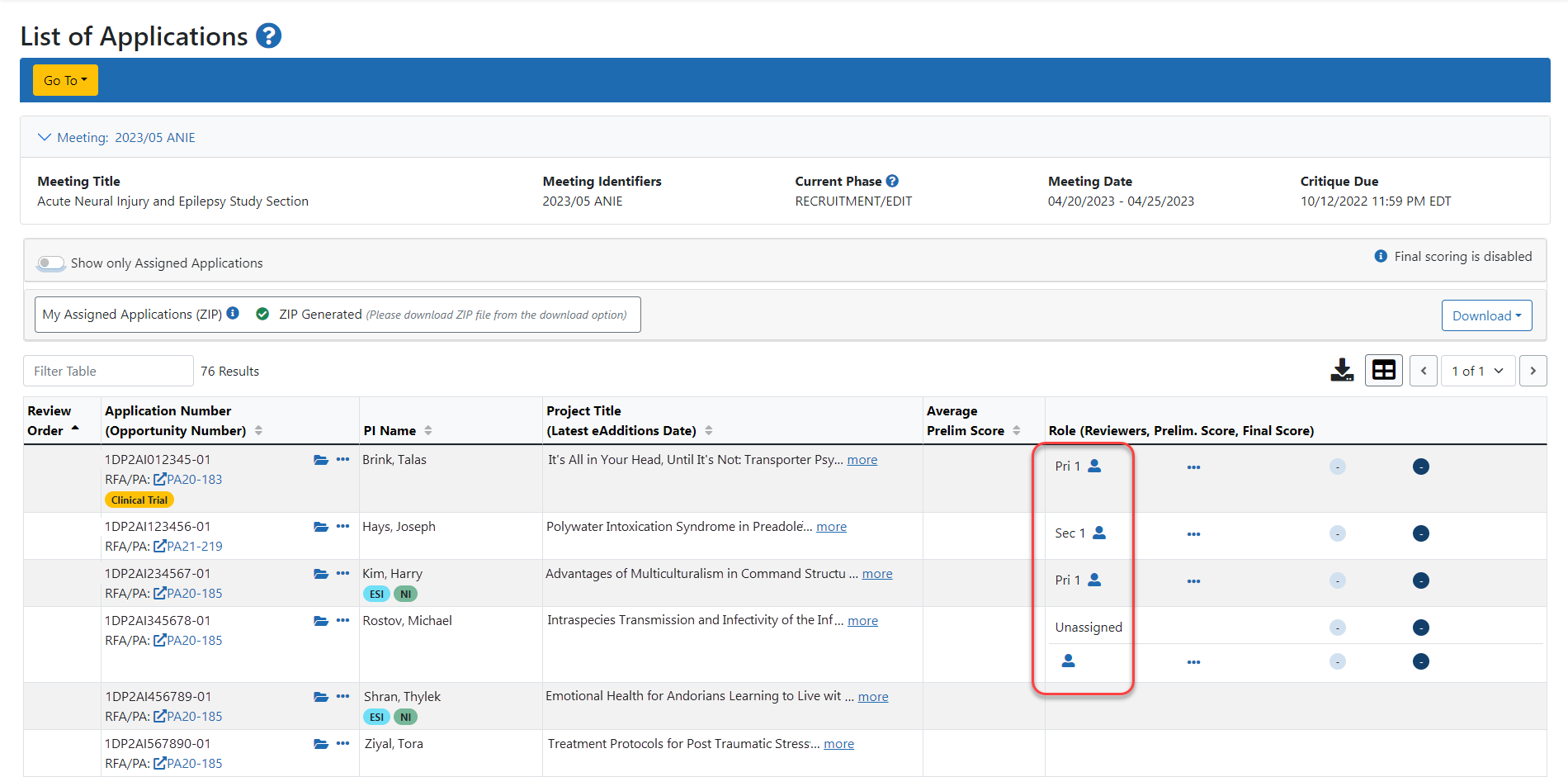Finding a Reviewer's Assigned Role
Reviewers may have different responsibilities at review meetings depending on their roles. Please check with your SRO* if you have questions or concerns about your role. ![]() To identify your assignment role, look in the Role (Reviewers, Prelim. Score, Final Score) column of the List of Applications.
To identify your assignment role, look in the Role (Reviewers, Prelim. Score, Final Score) column of the List of Applications.
Possible roles and associated responsibilities are as follows:
Primary/Reviewer 1, Secondary/Reviewer 2 and Tertiary/Reviewer 3 (sometimes also designated as Discussant):
- Review your assigned applications
- Write and submit critiques and scores for assigned applications
- Read critiques form other assigned reviewers
- Be prepared to discuss the score driving strengths and weaknesses
Discussant
- Read and understand the critiques of the assigned applications
- Provide a short, written review if the SRO asks for one
Mail Reviewer*
- Check with your SRO
- Provide a written critique for the applications assigned and maybe submit preliminary criterion and/or impact scores.
* A Mail reviewer is one who completes critiques of applications but who does not attend a meeting to discuss the applications.
Chair
- Review the abstract and aims of all applications, and discuss any issues or changes in review policy/guidelines with the SRO
- Write critiques and submit scores for the specific applications assigned to them (can be Reviewer 1, 2 or 3 for any given assignment)
- Follow up on any other chair-specific instructions provided by the SRO
This information can also be found on the Guidance for Reviewers website, Know Assignment Role page.
TIP: *Other Transaction Authority (OTA) - Some screens and terminology may be different in order to accommodate review of OTA, a type of award that is neither a grant nor a contract but a different way of funding that is used across NIH. These changes will typically not be visible to NIH or agency reviewers.

